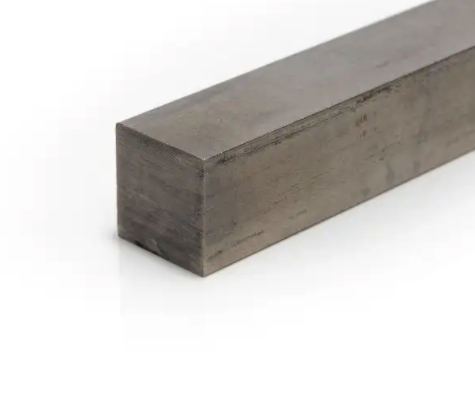What is Stainless Steel and How do you weld it?
Stainless steel is heavily used in a variety of applications, from kitchen appliances to skyscrapers. It's strong, durable, resistant to rust and decorative which makes it perfect for a variety of projects, but when should you use it?
Learning how to work with stainless steel may be daunting but it could help you make your best project yet!
In this blog, I'll be sharing basic knowledge about working with stainless steel. We’ll be writing about its properties, the different types of stainless steel that are available commonly available and its uses. As well as when it is best to use it along with tips and tricks for the perfect weld. We’ll also be sharing some past projects that have been made using Stainless Steel.
Stainless steel is an alloy, which means it's the mixture of different metals that give it major advantages over other forms of steel. The main difference in ingredients is chromium which gives stainless steel its corrosion resistant properties. Other elements, like nickel and titanium are can be added to add specific qualities, such as increased strength or heat resistance.
So what are some advantages and Disadvantages of using stainless steel?
Advantages:
Durability: Stainless steel is very strong and durable, which makes it ideal for a piece that needs to last a lifetime.
Corrosion resistant: Stainless steel is highly resistant to corrosion, which means it will not rust or corrode over time. This makes it great for use in harsh environments, such as outdoors or in areas with high humidity like a bathroom or the marine environment.
Hygienic: Stainless steel is easy to clean and sterilize, making it perfect for use in food preparation and surgical tools.
Recyclable: Stainless steel is 100% recyclable, which makes it a great environmentally friendly material.
Appearance: Stainless steel is hard so the finish can be very resistant to wear, especially brushed steel, its resistance even makes a mirror finish a very viable option for a lot of stainless steel products.
Disadvantages:
Cost: Stainless steel is more expensive than other mild steel which can put people off if this is their first time working with it and feel that they might make a mistake.
Weldability: It is tricker to weld in some aspect as it conducts heat very well. It requires specific welding processes to join predominately TIG Welding.
Hardness: One of the biggest challenges is that it's very hard. This makes it difficult to cut, drill, and shape and will wear out your tools faster than other metals.
What products are commonly made from Stainless Steel?
Travel mugs, flasks and insulated bottles are made from stainless steel for a few key reasons, it is food safe so it wont leach chemicals into your drink as the thin layer of chromium oxide prevents any rusting and is easy to clean due to its smooth finish. Stainless steel can be very thin allowing these products to have two layers of steel with a vacuum layer between which creates double-wall vacuum insulation. This design minimizes heat transferring from the surroundings and helps keep beverages hot or cold for much longer than a normal container.
Stainless Steel Cutlery is common place
Handrails are decorative
Stainless Steel Water bottles are hygenic.
It’s use in Interior Design:
It is commonly used for decorative purposes as it has a modern aesthetic appeal, is durable and versatile. This is because stainless steel has a clean, shiny, and reflective surface that creates a contemporary and polished look. This makes it ideal for modern and minimalist interior designs. It can complements a variety of materials, such as wood, glass, and stone, enhancing the overall design.
It can be shaped and fabricated into various forms, such as railings, panels, trims, countertops, and decorative accents. Available in different finishes, including satin brushed or highly polished, it can suit diverse design styles. The reflective nature of stainless steel can make spaces appear larger and brighter by bouncing light around the room
Its robustness makes it suitable for high-traffic areas or places prone to wear and tear - like hand rails. Stainless steel is easy to clean and maintain. A simple wipe can restore its shine, making it a practical choice for functional elements that people come in contact with like handrails and is non-porous, making it resistant to bacteria and easy to sanitize.
Common Uses in Interior Design:
Kitchen: Countertops, backsplashes, sinks, and appliances
Living Spaces: Decorative wall panels, furniture accents, and light fixtures.
Bathrooms: Taps, shower panels, and hardware.
Staircases: Railings and balustrades.
The combination of aesthetics and practicality makes stainless steel a favorite for designers and homeowners seeking a balance of beauty and functionality.
So, When should you use stainless steel in your project?
If your project will be kept outside or in contact with water it is a great option.
Equally if you need a chemically resistant work surface for cleaning this is the material for you. Stainless steel is stronger than mild steel making it the perfect upgrade for your next product.
The aesthetic appeal of stainless steel makes it well suited to architectural features like railing, handles and frames, equally durable mirror and brushed finishes make objects like sculptures and furniture look high end with sleek smooth lines and perfect reflective surfaces. Components like exhaust systems, heat exchangers benefit from stainless steel's high temperature resistance. This is because it will have low levels of expansion and contraction compared with other metals at extreme temperatures.
Most stainless steels are non-magnetic, this is called austenitic steel and contains between 12–27% of chromium and 7–30% of nickel. This means that it will be perfect for an electronic component or medical device or any other product that does not want to be magnetic.
The most common types of stainless steel are
304 Stainless Steel: This is the most common, versatile, and corrosion-resistant grade used for decorative purposes.
316 Stainless Steel: Sometimes referred to as marine grade stainless steel it has enhanced corrosion resistance, especially against chlorides, due to added molybdenum.
How to Weld Stainless Steel?
In some ways, stainless steel can be harder to weld in others it can be easier. You can use two methods to weld stainless Steel
MIG Welding: You can use the MIG process to Weld Stainless Steel. If you own a MIG Welder you will need to buy a Stainless Steel Wire Spool and use Pure Argon Gas. Which creates a cleaner insert environment. MIG Welding is one of the most common welding processes and more forgiving than the others.
TIG Welding: You can use a DC TIG welder to join stainless steel. TIG Welding is the most decorative way to join stainless steel. You will need to use the correct tungsten electrodes to do this. TIG welding stands for Tungsten-inert-Gas Welding and is one of the more trickier welding processes
MIG Welding Set up
TIG Welding Set up.
Online Welding Bootcamp
Discover our online welding bootcamp and learn the essential skills to MIG Weld and TIG Welding. From £89.00
CLICK HERE TO FIND OUT MORE
Finishing Stainless Steel:
The most common stainless steel finish is the mirror finish which creates a perfect reflective finish. This is achieved by making sure the metal is clean and doesn't have any deep scratches which should be removed. If you are going to try and achieve this finish a lot of labour is required.
If want achieve a mirror finish start by using;
60-80 grit flat disc or a grinding wheel. Y
You then need to sand the work piece using 120 Grit through to 400 (Key tip - this must be done evenly and consistently to make the surface perfectly flat, any scratches from the previous grit must also be removed before moving onto the next grit).
You then use a polishing compound with sandpaper over 1000 grit to create the stage 1 of mirror finishing.
Move onto a buffing wheel - variable speed one is perfect.
Keep going with the above process on faster and faster speeds until the desired finish is achieved.
The polishing not only creates a shinny decorative finish but enhances the corrosion resistance of the material. For example; in the marine environment highly polished stainless steel is common place due to the increase protection offered and the effect of salt water environment.
If you want to achieve a brushed satin finish;
Grind and Sand the piece unto 400 grit.
Once the surface is prepared you should begin to sand in a consistent direction to create the brushed lines that are so characteristic of this finish.
Use a softer finish with a higher sheen you can use a fine polishing compound to buff the steel along the lines.
Employ the use of a Brushed Satin Wheel to help.
Different Polishing wheels for Stainless Steel
Artistic Purposes:
Believe it or not stainless steel create vibrant colours such as; golds, blues, greens, purples or bronze. This is achieve by applying heat through a blow torch or some the welding process itself. Artistic Welders create weld art and sculptures using Stainless Steel Forks, Knives and Spoons. The bolder you can be the more creative the results.
Material Library:
A selection of the most commonly used stainless steel section. Most stainless steel comes with a milled finish, however, you can buy pre-polished stainless steel. In the UK, Metals 4 U is a good option for an online supplier. Check out there website and see there selection.
Stainless Steel Tube.
Section Sizes 12-158mm Wall Thickness varies 0.9mm through to 8mm
Flat Bar
Section Sizes 12mm - 100mm Thickness up to 12mm
Solid Square Bar
Section Sizes 6-30mm.
Channel
Section sizes 20-100mm thickness up to 4mm
Stainless Steel Angle
Section Sizes: 10-100mm Thickness 3-4mm
Sheet Material
Section Sizes 0.6mm through to 8mm
Square Box Section:
Section Sizes 10mm-100mm Wall thickness 1.2mm through to 3mm
Personal Profile:
This Weld Space blog was written by Jamie Redington, an upcoming designer studying at the University of Plymouth, whilst on the internship autumn scheme at The Weld Space.
See his current university portfolio here:

















